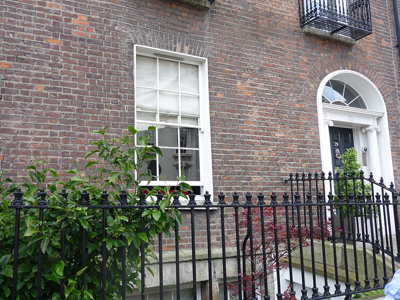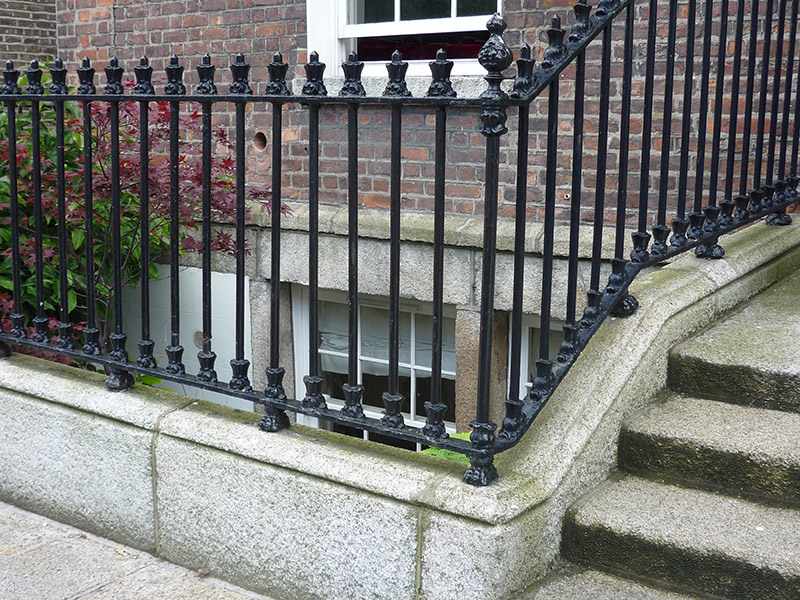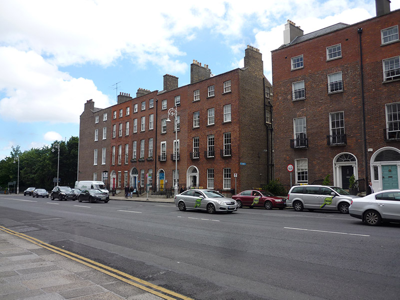Survey Data
Reg No
50100440
Rating
Regional
Categories of Special Interest
Architectural
Original Use
House
In Use As
Apartment/flat (converted)
Date
1770 - 1790
Coordinates
316465, 233500
Date Recorded
01/07/2016
Date Updated
--/--/--
Description
Corner-sited two-bay four-storey former house over basement, built c. 1780 as one of pair with No. 28, having three-bay rear elevation with full-height bow to two northern bays. Nos 25-29 remodelled as apartments c. 1995, entrance through No. 27. Pitched slate roof, hipped to south end of front, behind parapet having masonry coping, and rear having two roofs perpendicular to street, smaller hipped roof to south bay and almost pyramidal hipped roof to rear, with flat section over bow. Front elevation rebuilt above voussoirs of second floor window openings. Rendered chimneystacks to north gable and party wall, with terracotta pots. Parapet gutters and replacement aluminium rainwater goods. Flemish bond red brick walling to front elevation on granite plinth over painted rendered basement walls, and having painted rendered walls to north and rear elevations. Square-headed window openings, diminishing in height to upper floors, with painted rendered reveals and granite sills, having granite surrounds to basement openings, and with round-headed stairs window opening to rear elevation. Replacement timber sliding sash windows with ogee horns and vents, three-over-three pane to top floor and six-over-six pane elsewhere, with replacement uPVC windows to rear elevation of south bay. Front elevation has decorative cast-iron balconettes to first floor and wrought-iron window-guards to second floor. Elliptical-headed doorcase to front entrance, having moulded rendered reveals, pro-style Ionic columns, fluted entablature with rosettes, spoked fanlight, twelve-panel timber door with replacement chrome furniture and two bull's-nose sandstone steps. Granite flagged platform bridging basement, with four steps to street. Basement area enclosed by cast-iron railings with decorative finials and corner posts on moulded granite plinth.
Appraisal
A late eighteenth-century Georgian house, likely built as a pair with No. 28. Relatively well-retained and characterized by balanced proportions and a graded fenestration pattern typical of the period, the rear also featuring a bow. The relatively austere façade is enriched with a good decorative doorcase, setting features and cast-iron balconettes. Construction of Merrion Street began in the early 1750s, following the completion of Kildare (now Leinster) House. In 1762, when Merrion Square was laid out, the middle portion of Merrion Street became the west side of the square. No. 29 makes an important contribution to the early streetscape character and architectural quality of this part of Merrion Street Upper, which has been fairly well retained along this eastern stretch.





















